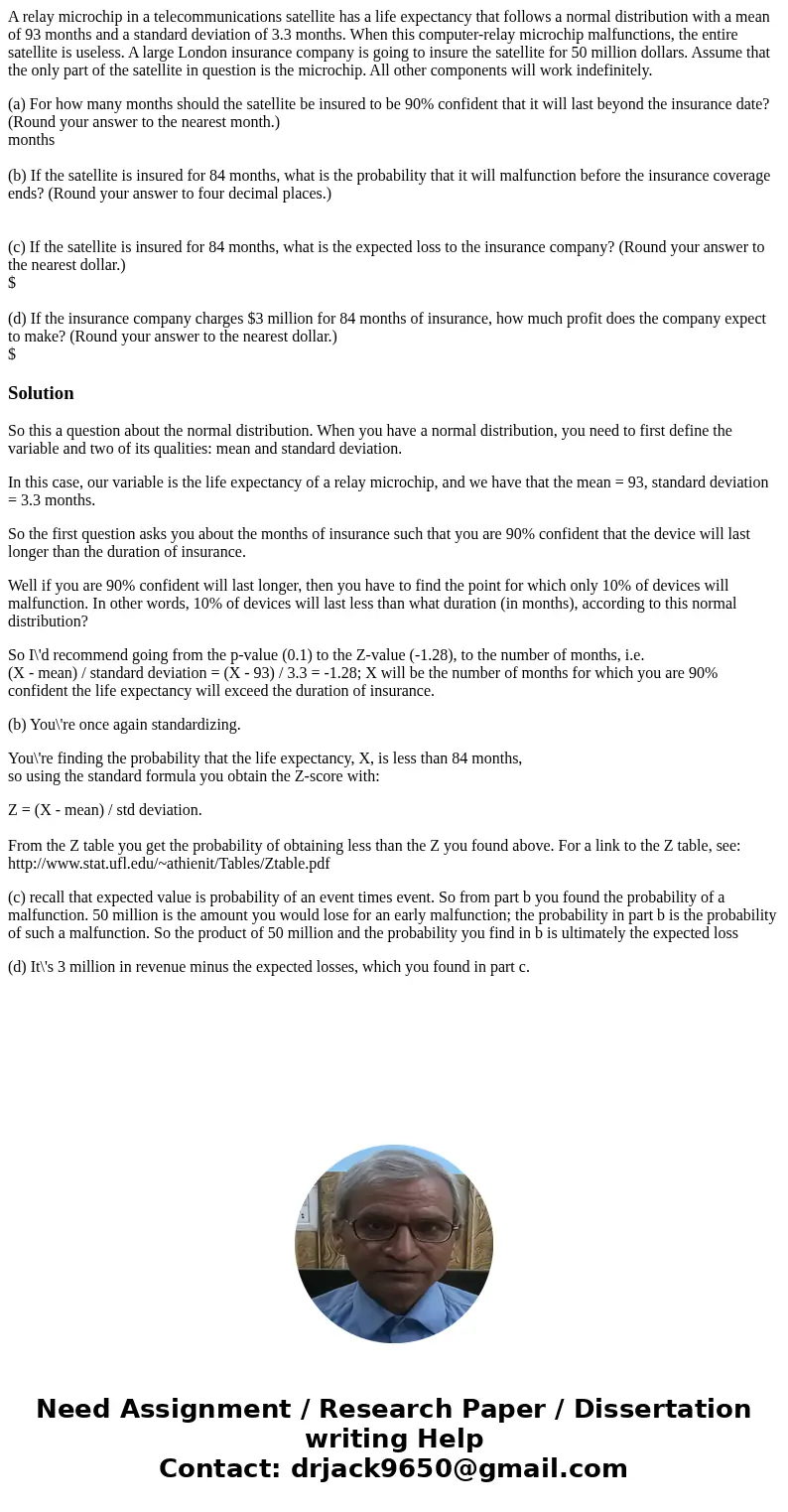A relay microchip in a telecommunications satellite has a li
A relay microchip in a telecommunications satellite has a life expectancy that follows a normal distribution with a mean of 93 months and a standard deviation of 3.3 months. When this computer-relay microchip malfunctions, the entire satellite is useless. A large London insurance company is going to insure the satellite for 50 million dollars. Assume that the only part of the satellite in question is the microchip. All other components will work indefinitely.
(a) For how many months should the satellite be insured to be 90% confident that it will last beyond the insurance date? (Round your answer to the nearest month.)
months
(b) If the satellite is insured for 84 months, what is the probability that it will malfunction before the insurance coverage ends? (Round your answer to four decimal places.)
(c) If the satellite is insured for 84 months, what is the expected loss to the insurance company? (Round your answer to the nearest dollar.)
$
(d) If the insurance company charges $3 million for 84 months of insurance, how much profit does the company expect to make? (Round your answer to the nearest dollar.)
$
Solution
So this a question about the normal distribution. When you have a normal distribution, you need to first define the variable and two of its qualities: mean and standard deviation.
In this case, our variable is the life expectancy of a relay microchip, and we have that the mean = 93, standard deviation = 3.3 months.
So the first question asks you about the months of insurance such that you are 90% confident that the device will last longer than the duration of insurance.
Well if you are 90% confident will last longer, then you have to find the point for which only 10% of devices will malfunction. In other words, 10% of devices will last less than what duration (in months), according to this normal distribution?
So I\'d recommend going from the p-value (0.1) to the Z-value (-1.28), to the number of months, i.e.
(X - mean) / standard deviation = (X - 93) / 3.3 = -1.28; X will be the number of months for which you are 90% confident the life expectancy will exceed the duration of insurance.
(b) You\'re once again standardizing.
You\'re finding the probability that the life expectancy, X, is less than 84 months,
so using the standard formula you obtain the Z-score with:
Z = (X - mean) / std deviation.
From the Z table you get the probability of obtaining less than the Z you found above. For a link to the Z table, see: http://www.stat.ufl.edu/~athienit/Tables/Ztable.pdf
(c) recall that expected value is probability of an event times event. So from part b you found the probability of a malfunction. 50 million is the amount you would lose for an early malfunction; the probability in part b is the probability of such a malfunction. So the product of 50 million and the probability you find in b is ultimately the expected loss
(d) It\'s 3 million in revenue minus the expected losses, which you found in part c.

 Homework Sourse
Homework Sourse